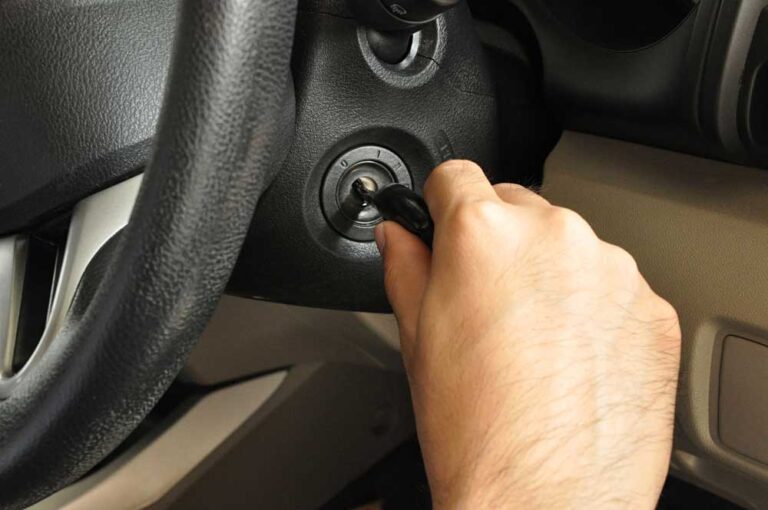Does Replacing the Upper Control Arm Affect Alignment?

When it comes to vehicle suspension systems, the upper control arm plays a critical role in ensuring proper handling, stability, and comfort. But what happens when you replace it? Does replacing the upper control arm affect alignment? The short answer is yes—it can have a significant impact.
In this article, we’ll discuss the role of the upper control arm, how its replacement affects alignment, why alignment matters, and what steps you should take after replacing the control arm.
What Is the Upper Control Arm?
The upper control arm is a suspension component that connects the vehicle’s frame to the steering knuckle. It works in tandem with the lower control arm to:
- Support the wheel assembly.
- Control the wheel’s vertical movement.
- Maintain proper wheel alignment angles.
The control arm is equipped with bushings and ball joints, which allow for smooth movement while keeping the suspension tight and stable.
Why Might You Need to Replace the Upper Control Arm?
Over time, the upper control arm and its associated components (bushings and ball joints) can wear out due to:
- Age and mileage: Natural wear and tear over time.
- Rough driving conditions: Potholes, off-road driving, or uneven surfaces.
- Corrosion: Rust and damage from exposure to road salt or moisture.
- Accidents: Collisions can bend or damage the control arm.
Common symptoms indicating a need for replacement include:
- Unusual tire wear.
- Clunking or creaking noises when driving.
- Poor handling or instability.
- Misaligned wheels.
Does Replacing the Upper Control Arm Affect Alignment?
Yes, replacing the upper control arm can affect wheel alignment. Here’s why:
1. Changes in Suspension Geometry
The upper control arm directly influences the alignment angles of the wheels, particularly:
- Camber: The tilt of the wheels in or out.
- Caster: The angle of the steering pivot.
When the control arm is replaced, the position of these angles may shift, resulting in misalignment.
2. Disturbed Alignment Settings
During the replacement process, the suspension system may be disassembled or adjusted, which can alter the existing alignment settings.
3. Wear and Tear on Other Components
A damaged upper control arm often affects other suspension components. Even after replacement, alignment issues can persist if related parts are worn or damaged.
Why Is Proper Alignment Important?
Alignment ensures that your wheels are positioned correctly relative to the road and the vehicle. Proper alignment is essential for:
- Tire Longevity: Misalignment causes uneven tire wear, shortening their lifespan.
- Fuel Efficiency: Proper alignment reduces rolling resistance, improving gas mileage.
- Handling and Safety: Aligned wheels ensure stable and predictable steering.
- Comfort: Prevents vibrations and ensures a smooth ride.
Steps to Take After Replacing the Upper Control Arm
1. Perform a Wheel Alignment
Always schedule a professional wheel alignment after replacing the upper control arm. This ensures that all alignment angles—camber, caster, and toe—are properly adjusted to the manufacturer’s specifications.
2. Inspect Related Components
Check for wear or damage to other suspension components, such as:
- Ball joints.
- Bushings.
- Tie rods.
- Lower control arms.
Replacing a worn upper control arm without addressing other issues can lead to persistent alignment problems.
3. Test Drive the Vehicle
After the alignment, test drive the car to ensure it handles correctly and doesn’t pull to one side.
FAQs
1. Can I skip alignment after replacing the upper control arm?
No, skipping alignment can lead to uneven tire wear, poor handling, and reduced safety.
2. How much does a wheel alignment cost?
A professional wheel alignment typically costs between $75 and $150, depending on the vehicle and service location.
3. Can I perform the alignment myself?
While minor adjustments can be made at home, a professional alignment is recommended for precision and accuracy.
4. What happens if I drive with misaligned wheels?
Driving with misaligned wheels can cause premature tire wear, reduced fuel efficiency, and compromised handling.
5. Are aftermarket control arms compatible with factory alignment settings?
Some aftermarket control arms may alter alignment angles. Ensure compatibility with your vehicle before installation.
Conclusion
Replacing the upper control arm is a crucial repair for maintaining your vehicle’s suspension system, but it can significantly impact alignment. To ensure optimal performance, safety, and tire longevity, always perform a professional wheel alignment after replacing the control arm.
Proper alignment not only enhances your vehicle’s handling but also prevents costly repairs down the line. If you’re unsure about the process, consult a trusted mechanic to address all your suspension and alignment needs.
Also Check:
• How Do I Know If I Need a Tire Alignment?






One Comment